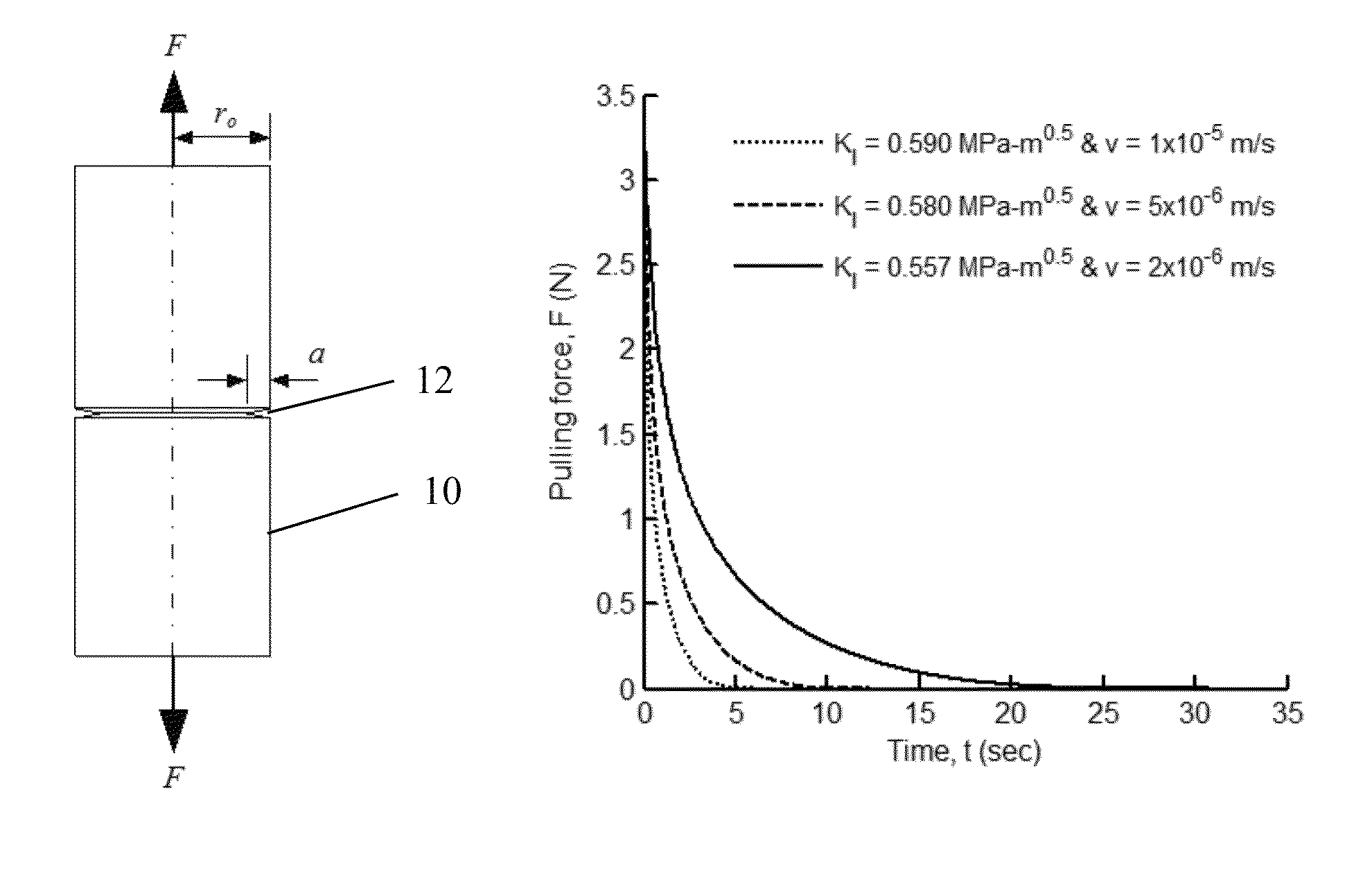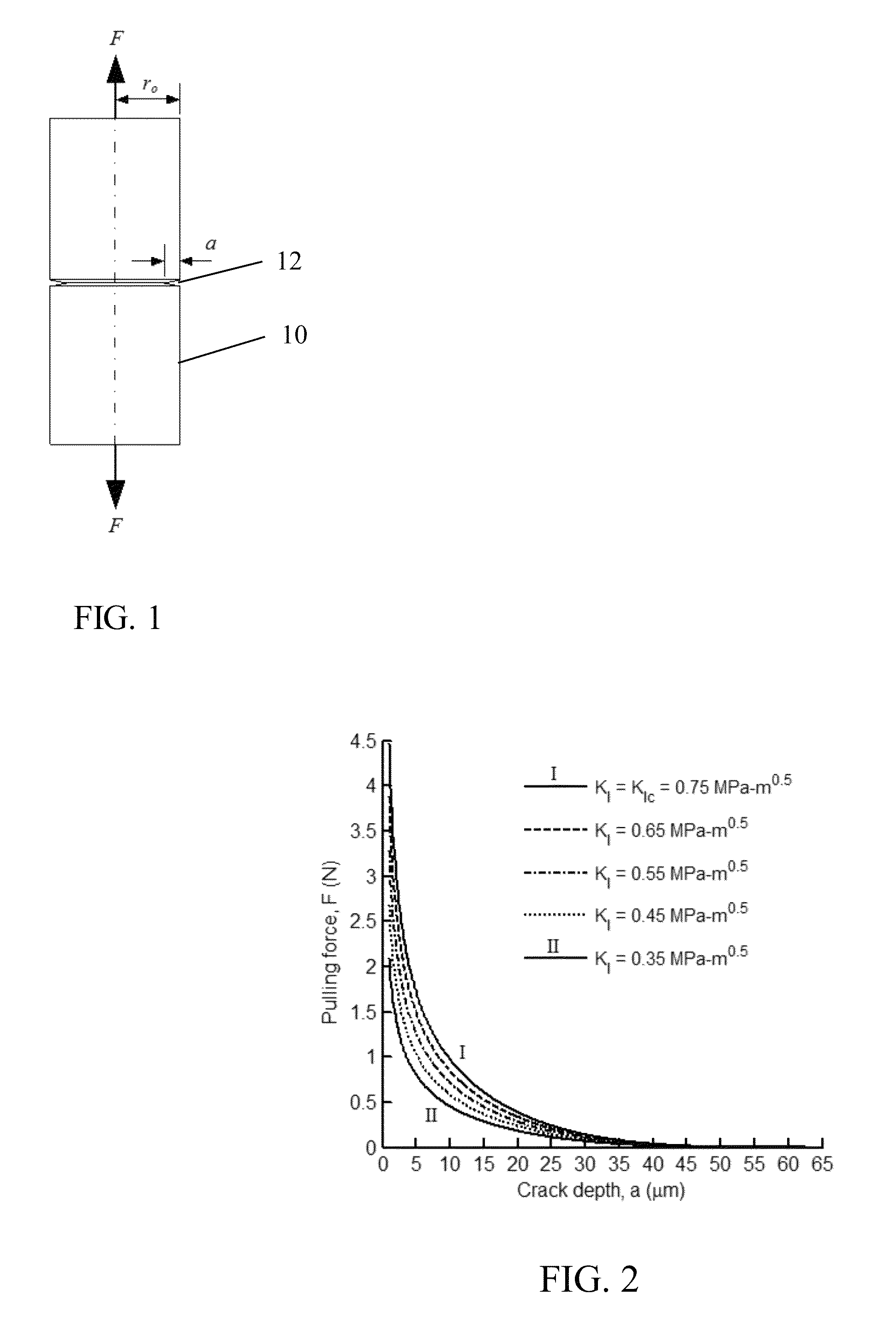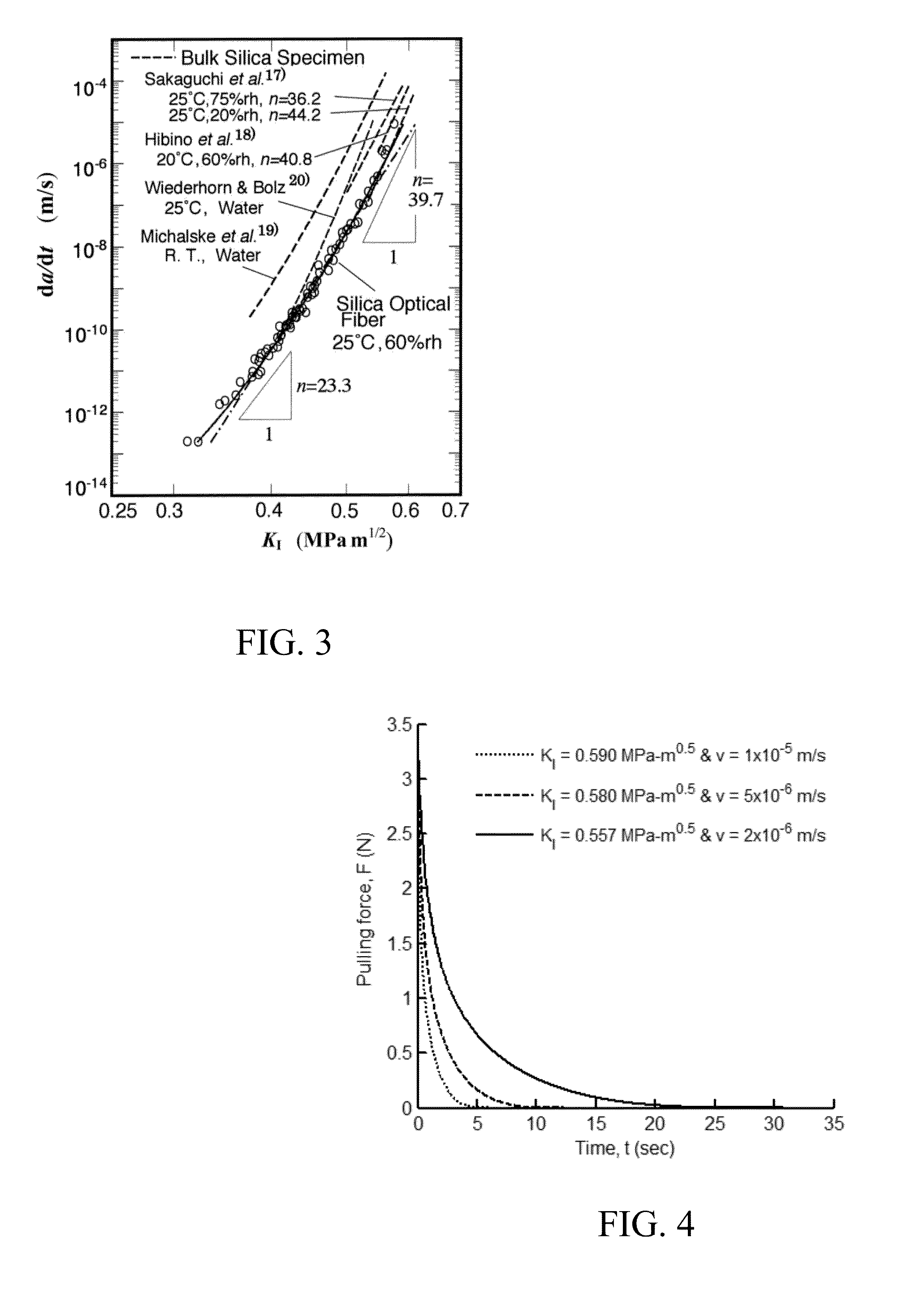Deterministic cleave of optical fiber
a technology of optical fibers and deterministic cleaving, applied in the field of optical fibers, can solve the problems of excessive light loss, cleave to propagate, and hackle on the cleaved end, and achieve the effects of simple and reliable deployment, effective, efficient and reliable approach, and minimizing light loss
- Summary
- Abstract
- Description
- Claims
- Application Information
AI Technical Summary
Benefits of technology
Problems solved by technology
Method used
Image
Examples
Embodiment Construction
[0018]This invention is described below in reference to various embodiments with reference to the figures. While this invention is described in terms of the best mode for achieving this invention's objectives, it will be appreciated by those skilled in the art that variations may be accomplished in view of these teachings without deviating from the spirit or scope of the invention.
[0019]The present invention provides a process that can be simply and reliably deployed to properly cleave optical fibers to obtain smooth ends, so as to minimize light loss when the fibers are subsequently coupled (e.g., spliced or coupled end-to-end). The process in accordance with the present invention provides an effective, efficient and reliable approach to prepare optical fiber end faces without requiring polishing, which facilitates operations in a factory and could facilitate operations in field environment as well.
[0020]In one aspect of the present invention, axial tension applied to the optical f...
PUM
 Login to View More
Login to View More Abstract
Description
Claims
Application Information
 Login to View More
Login to View More - R&D
- Intellectual Property
- Life Sciences
- Materials
- Tech Scout
- Unparalleled Data Quality
- Higher Quality Content
- 60% Fewer Hallucinations
Browse by: Latest US Patents, China's latest patents, Technical Efficacy Thesaurus, Application Domain, Technology Topic, Popular Technical Reports.
© 2025 PatSnap. All rights reserved.Legal|Privacy policy|Modern Slavery Act Transparency Statement|Sitemap|About US| Contact US: help@patsnap.com



